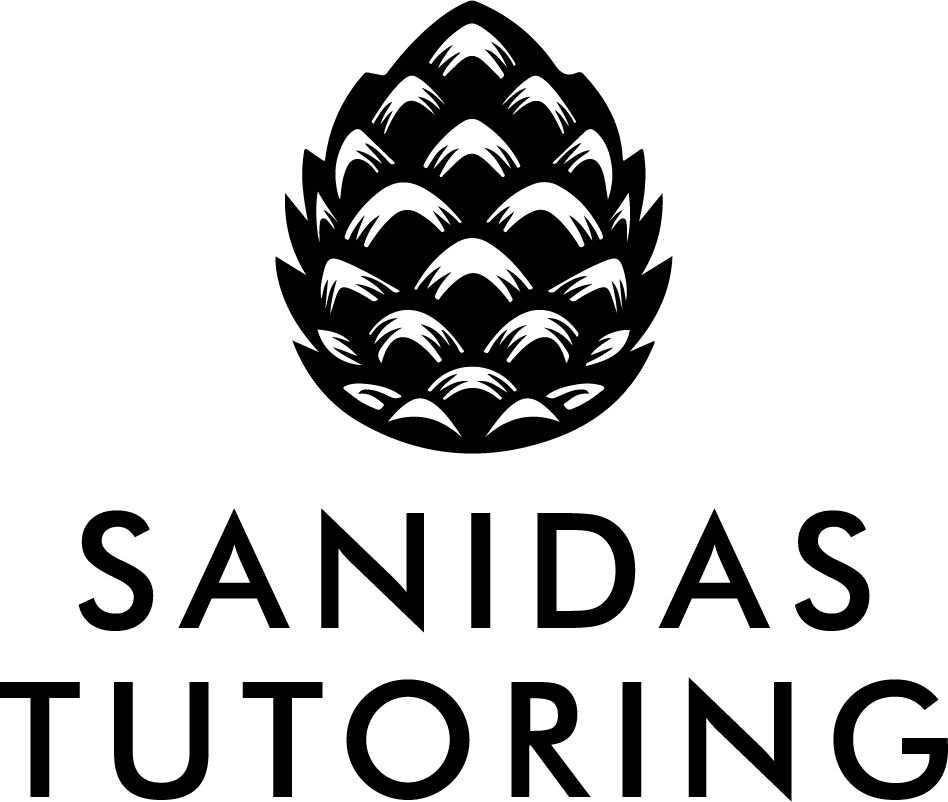
Dyslexia tutoring Program
What is Dyslexia?
Dyslexia is a learning difference that affects twenty percent of the population. It is a phonological deficit that is passed down through generations. Dyslexic students perceive phonemes, the smallest unit of sound, differently than nondyslexic students. Since the prerequisite to reading is phonemic awareness, the brain must be taught how to manipulate sounds in order to properly read.
How can we help?
Despite a neurological approach that has been around since the 1920s, elementary schools are still using, “whole language”. Our English department, here at Sanidas Tutoring, includes professionals who are fully trained in the Orton Gillingham Approach for teaching and reading to students with dyslexia. This approach is recognized as the most effective way to handle problems with phonemic awareness, and the best counter for issues brought about by dyslexia.

The S.A. TEAM
If you have a child who is struggling to read, spell, write, or comprehend information, please consider Sanidas Tutoring’s Dyslexia Department.
Our sessions work.
Our teachers care.
Our students succeed.
Dyslexia Program
What Is Dyslexia?
Dyslexia is a learning difference that affects twenty percent of the population. It is a phonological deficit that is passed down through generations. Dyslexic students perceive phonemes, the smallest unit of sound, differently than nondyslexic students. Since the prerequisite to reading is phonemic awareness, the brain must be taught how to manipulate sounds in order to properly read.
Common Signs of Dyslexia
Up to 20% of the population shows at least some signs of dyslexia, according to the International Dyslexia Association.
The most common signs of dyslexia can vary by age, as they are most often observed in the way a person communicates and learns, which can grow and change over time. However, dyslexia is frequently diagnosed around the time a child reaches grade school, and it often presents itself in the following ways:
- Difficulty concentrating
- Difficulty following instructions
- Slow progress in reading and writing
- Poor reading comprehension
When a dyslexic elementary school student reads, they might:
- Pronounce words in an unusual way
- Show difficulty reading aloud
- Miss or add words
A dyslexic student may also lack emphasis when reading aloud.
When a dyslexic elementary school student writes, they may:
- Have poor handwriting, including crossed-out misspellings
- Reverse letters or confuse similar-looking ones
- Spell words differently in a single piece of writing
Dyslexic students often also struggle with proper word or letter sequencing.
Dyslexia can manifest in ways unrelated to reading and writing as well, including:
- Struggling with telling and keeping time
- Struggling to identify the day, date, or other markers of time
- Having difficulty processing and relaying items in sequence
- Struggling with place values and symbols related to math
- Demonstrating poor memory
- Showing poor motor skills
There are various other signs that an elementary student may be dyslexic, including becoming easily distracted, acting out in class, and struggling with excessive tiredness.
If you notice any of these symptoms in your elementary school-aged child, or noticed them when your older child was in elementary school, reach out to their school or a doctor to seek a diagnosis. If they are diagnosed, know that dyslexia tutoring can be transformative in both your child’s education and overall quality of life.
How Can We Help?
Despite a neurological approach that has been around since the 1920s, elementary schools are still using, “whole language”. Our English department, here at Sanidas Tutoring, includes professionals who are fully trained in the Orton-Gillingham Approach for teaching and reading to students with dyslexia. This approach is recognized as the most effective way to handle problems with phonemic awareness, and the best counter for issues brought about by dyslexia.
What Is the Orton-Gillingham Approach?
The Orton-Gillingham Approach is a teaching technique designed to meet the unique learning needs of dyslexic students. It focuses on breaking down words into their individual letters and the sounds associated with them. The technique also incorporates not only sight and hearing, but also touch to the teaching of reading and spelling.
The aim of the Orton-Gillingham Approach is to address the differences in the way a dyslexic student processes sound at its most basic level so that they can build a foundation for strong reading and spelling abilities as well as reading comprehension.
Our Dyslexia Tutoring Program
The dyslexia tutoring program at Sanidas Tutoring offers dyslexic students an opportunity to work one-on-one with an experienced tutor who has the knowledge and education required to meet their unique learning needs, in addition to the compassion that can give your child the confidence to succeed.
What to Expect from Your Child’s Dyslexia Tutoring
Because the symptoms of dyslexia and their severity can vary widely, your child’s dyslexia program will be personalized based on their specific learning needs.
We will work with your child to better understand their strengths and weaknesses when it comes to learning with dyslexia. From there, we will form a customized dyslexia program to bolster their strengths and strengthen their weaknesses to help them find continued success in education and in life.
As you might expect, our approach to your child’s dyslexia tutoring program will also be centered around their age. Here’s what each individual program might look like:
Dyslexia Tutoring for Preschool and Kindergarten Students
If your child is diagnosed before they’ve begun elementary school, then our dyslexia tutoring will focus less on unlearning various coping skills that many dyslexic students develop as they progress through school and more on the unique areas of difficulty common to dyslexic students.
In fact, there may be many similarities to the standard teaching style when it comes to reading and writing. The primary focus will generally be on developing your child’s ability to hear, identify, and use phonemes in a way that is intuitive for their needs.
Dyslexia Tutoring for Elementary School Students
By elementary school, your child will have begun learning how to read and write, and they may be behind other students in their progress. They may also have begun to develop certain strategies to overcome the symptoms that are holding them back in school.
Because of this, our tutors for dyslexic students will help your child get a fresh start in their reading and writing education, but with an approach that’s centered around their unique learning needs.
The Orton-Gillingham Approach will help your child to break down words into simple sounds and understand them on a base level through sight, sound, and even touch.
Dyslexia Tutoring for Middle and High School Students
Middle and high school students who have been diagnosed with dyslexia will likely have their coping strategies far more ingrained, as that is what has been required of them to continue their educational progress.
For this reason, our tutors for dyslexic students will place a greater emphasis on identifying those coping strategies and helping your child to reduce their reliance on them. At this age, your child’s dyslexia may have made more of an impact on their lives than in their education alone.
Working one-on-one with an experienced tutor in a personalized dyslexia tutoring program can not only help your child to succeed in school, but it can also help them identify that impact, process it, and begin working to improve their daily lives with the new knowledge and skills they’ve acquired.
Why Choose Sanidas Tutoring?
Your child’s education is important to you, so finding the perfect tutoring program for them is essential. Here’s why we believe that Sanidas Tutoring can be the best program for your child.
Customized Curriculum
Every child has their own set of skills when it comes to learning. With dyslexic students, this principle is particularly true. At Sanidas Tutoring, we forgo the idea of standardized learning in favor of harnessing the unique learning skills your child possesses.
Our tutoring programs are always personalized, with the one and only goal being a child’s success in education and beyond.
Individual Attention
Every child — and every adult, for that matter — can enjoy a better opportunity to learn when their education doesn’t have to be shared with a room full of students who have different needs, different learning preferences, and different learning styles.
At Sanidas Tutoring, your child will be afforded the individual attention they need to overcome their learning difficulties and discover their own unique gifts.
Compassionate Tutors
Struggling to keep up with their classmates can have a profound effect on a child in a variety of ways. Those effects can be amplified even more when their educators don’t express understanding or compassion for the struggle they’re experiencing.
The dyslexia tutors at Sanidas Tutoring are both knowledgeable and experienced in helping dyslexic students overcome those struggles. Let Sanidas Tutoring help your child find the path to success today.
The S.A. TEAM
If you have a child who is struggling to read, spell, write, or comprehend information, please consider Sanidas Tutoring’s Dyslexia Department.


